
Water Treatment Basics – Contaminants
Microbiological Contaminants
| Microbe Type | Example | Disease Examples | Approx Size |
| VIRUSES | Hepatitis, Coronavirus, Poliovirus | Hepatitis A, SARS, Polio | 0.005 Micron |
| BACTERIA | E. coli, Salmonella, Shigella | Diarrhea, Dysentery, Typhoid, Cholera | 0.5 – 2.0 Micron |
| CYSTS | Cryptosporidium, Giardia | Beaver Fever | 2 – 4 Micron |
| PARASITES | Tapeworm, Ascaris | GI Infection, Guinea Worm Disease | 35 – 75 mm (eggs) |
LEAD
- Lead does not occur naturally in water
- Homes built before 1986 – lead service pipes, fixtures and lead-based solder.
- Over time, water and chloramines corrode lead plumbing, causing traces of lead to leach into drinking water.
- Higher levels of lead can cause delayed physical and mental development in children, spikes in blood pressure & increased risk of kidney problems
VOC (Volatile Organic Compounds)
- Chemicals from fuels, solvents, polishes, cosmetics, dry cleaning solutions etc
- Spilled on the ground or dumped in toilets, eventually carried to water sources.
- Most VOCs are potential or known carcinogens
Trihalomethanes (THM)
- TriHaloMethanes
- A by-product formed when chlorine reacts with organic compunds
- Chloroform is an example
- Like VOC, THMs are also potential carcinogens
Turbidity
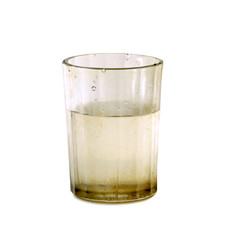
- Turbidity is the degree of cloudiness of water
- Sand, mud, fine silt, rust to minute microscopic particles, all contribute to turbidity
- Do not usually have any direct health hazard, but can harbour pathogenic microorganisms
- Degree of turbidity is measured in “Nephelometric Turbidity Units” or simply NTU
- Drinking water should have turbidity less than 1.0 NTU
Chlorine
- Most common problem in municipally treated water
- Not considered a direct health risk
- Many people are allergic to chlorine
- Most don’t like the smell & taste
- Affects taste of water and beverages
Hardness (Hard Water)
- Very common problem in well waters with limestone/marble
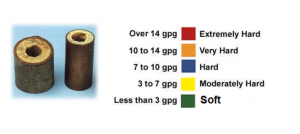
- Forms a whitish scale deposits
- Hard water does not form lather easily
- Hardness is measured in Grains Per Gallon (GPG) or PPM. (1 GPG = 17.1 PPM)
IRON
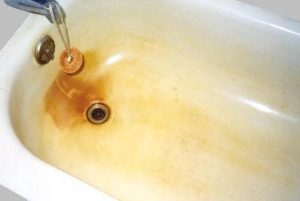
- Usually in well water. Present in the dissolved form as “Ferrous Iron”. Contact with air makes it into “Ferric Iron” (Rust).
- Over 0.3 PPM (mg/L) iron causes reddish brown staining of plumbing fixtures, clothes, etc.
- It also gives water an unpleasant metallic taste
Manganese
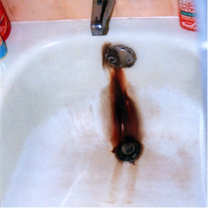
- Like Iron , it is found in ground water in the dissolved form until it comes into contact with air.
- Causes black deposits on fixtures and clothing if present over 0.05 PPM (mg/L)
- Health Canada has established an aesthetic objective of 0.02 PPM (mg/L)
- If present in water, it will usually be accompanied by Iron.
Hydrogen Sulphide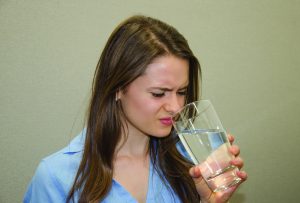
- Gives water a distinct offensive rotten egg odour, even in very low concentrations
- Usually accompanies iron &/or manganese in well waters.
- Tarnishes silver almost instantaneously
Tannins
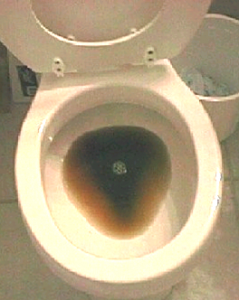
- Tannins are organics that are produced by decomposition of vegetation.
- Impart a faintly yellowish or brown colour to water.
- They are not a direct health hazard but make the water aesthetically unpleasant and reduce performance of disinfection devices such as UV
